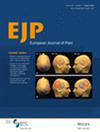Opioid Therapy in Chronic Pain: Assessment of Clinical Outcomes and Relationships With Endocrine Biomarkers
Abstract
Background
Long-term opioid treatment (L-TOT) may have consequences that are mediated by factors affecting functionality and health-related quality of life. This study aimed at investigating associations between L-TOT and clinical outcomes including sustained attention, short-term and working memory, worst pain intensity, sleep quality, mood, and health-related quality of life in patients with chronic non-cancer pain (CNCP). Additionally, the study aimed at exploring whether endocrine biomarkers mediate the relationship between L-TOT and these outcomes.
Methods
Cross-sectional study with 82 adult CNCP patients divided into two groups (opioid treated (n = 38) and controls not treated with opioids (n = 44)). Linear regression analyses assessed associations between L-TOT, outcome variables, and the mediating effects of endocrine biomarkers.
A Bootstrap approach with 95% confidence intervals was applied to analyse the natural indirect effect.
Results
The opioid group had worse sleep quality (p = 0.018), physical functioning (p = 0.0186), social functioning (p = 0.002), and higher pain intensity (p < 0.001) compared with controls. Men in the L-TOT group experienced worse measures for the same variables, and additionally for anxiety (p = 0.028), depression (p = 0.040), role physical (p = 0.038), role emotional (p < 0.001), fatigue (p = 0.019), and emotional well-being (p = 0.001). Only the association between L-TOT and anxiety in men was significantly mediated by total testosterone (β = 1.6, Bias-Corrected Bootstrap 95% CI: 0.1; 4.1, p = 0.045).
Conclusions
CNCP patients in L-TOT showed significantly poorer outcomes than controls. Only testosterone mediated anxiety in men, indicating a natural indirect effect. Causality and mediating effects of endocrine biomarkers need to be further explored, but the associations are an alert to the potential effects of opioids.
Significance Statement
This study reveals the broader health impacts of opioid use, particularly the role of hormone-related factors in men, which may be linked to specific adverse effects and consequences. Investigating these hormonal dynamics could lead to improved treatment strategies and outcomes.


 求助内容:
求助内容: 应助结果提醒方式:
应助结果提醒方式:


